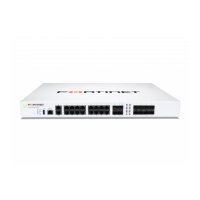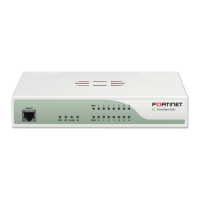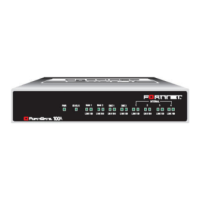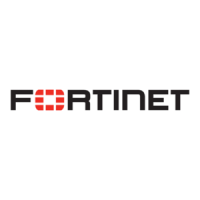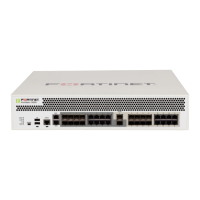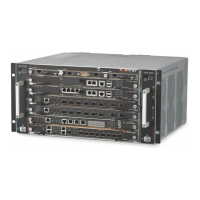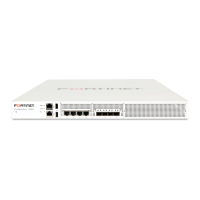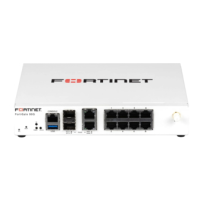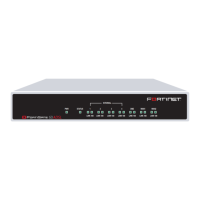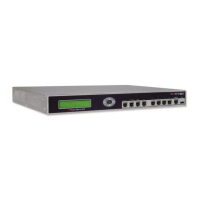Gateway mode deployment Configuring DNS records
FortiMail™ Secure Messaging Platform Version 4.0 Patch 1 Install Guide
Revision 2 97
http://docs.fortinet.com/ • Feedback
1 IN PTR fortimail.example.net.
where:
• example.net is the local domain name to which the FortiMail unit belongs; in the MX
record, it is the local domain for which the FortiMail is the mail gateway
• fortimail.example.net is the FQDN of the FortiMail unit
• fortimail is the host name of the FortiMail unit; in the A record of the zone file for
example.net, it resolves to the IP address of the FortiMail unit for the purpose of
administrators’ access to the web-based manager, email users’ access to their per-
recipient quarantines, to resolve the FQDN referenced in the MX record when email
users send Bayesian and quarantine control email to the FortiMail unit, and to resolve
to the IP address of the FortiMail unit for the purpose of the web release/delete
hyperlinks in the spam report
• 10.10.10.1 is the public IP address of the FortiMail unit
Case 2: Web Release Host Name/IP is configured
You could configure Web Release Host Name/IP to use an alternative fully qualified
domain name (FQDN) such as webrelease.example.info instead of the configured
FQDN, resulting in the following web release link (web release FQDN highlighted in bold):
https://webrelease.example.info/releasecontrol?release=0%3Auser2%4
0example.com%3AMTIyMDUzOTQzOC43NDJfNjc0MzE1LkZvcnRpTWFpbC00MDAsI0Y
jUyM2NTkjRSxVMzoyLA%3D%3D%3Abf3db63dab53a291ab53a291ab53a291
Then, in the DNS configuration to support this and the other DNS-dependent features, you
would configure the following MX record, A records, and PTR record (unlike “Case 1: Web
Release Host Name/IP is empty/default” on page 96, in this case, two A records are
required; the difference is highlighted in bold):
example.net IN MX 10 fortimail.example.net
fortimail IN A 10.10.10.1
webrelease IN A 10.10.10.1
1 IN PTR fortimail.example.net.
where:
• example.net is the local domain name to which the FortiMail unit belongs; in the MX
record, it is the local domain for which the FortiMail is the mail gateway
• fortimail.example.net is the FQDN of the FortiMail unit
• fortimail is the host name of the FortiMail unit; in the A record of the zone file for
example.net, it resolves to the IP address of the FortiMail unit for the purpose of
administrators’ access to the web-based manager and to resolve the FQDN referenced
in the MX record when email users send Bayesian and quarantine control email to the
FortiMail unit
• webrelease is the web release host name; in the A record of the zone file for
example.info, it resolves to the IP address of the FortiMail unit for the purpose of the
web release/delete hyperlinks in the spam report
• 10.10.10.1 is the public IP address of the FortiMail unit
Configuring a private DNS server
In addition to the public DNS server, consider providing a private DNS server on your local
network to improve performance with features that use DNS queries.
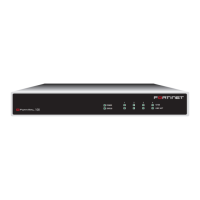
